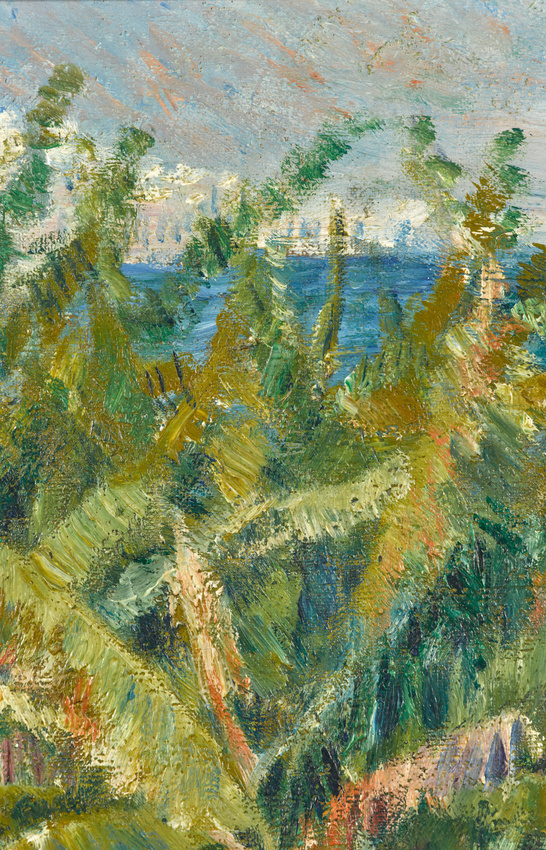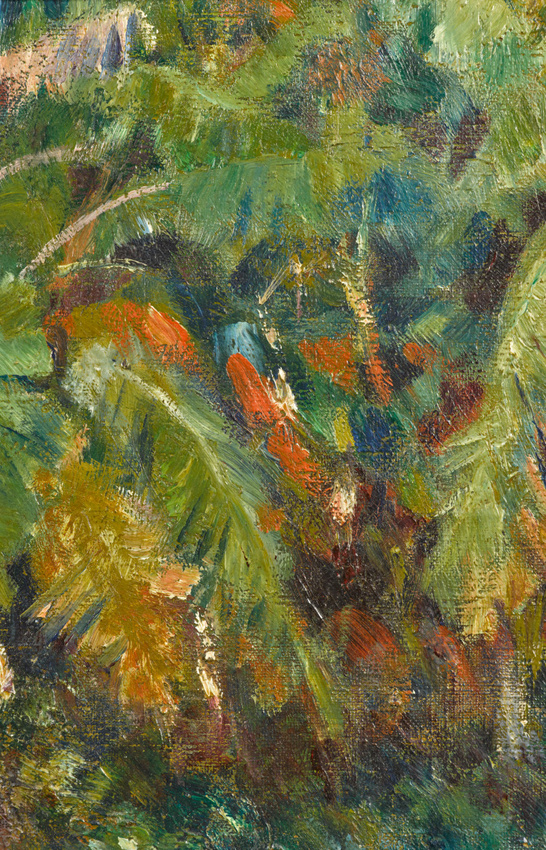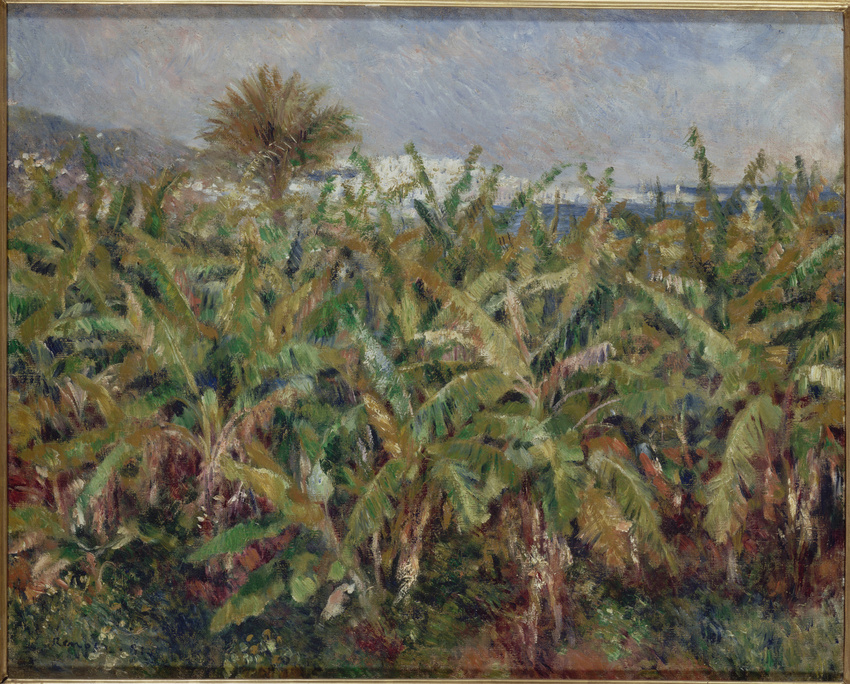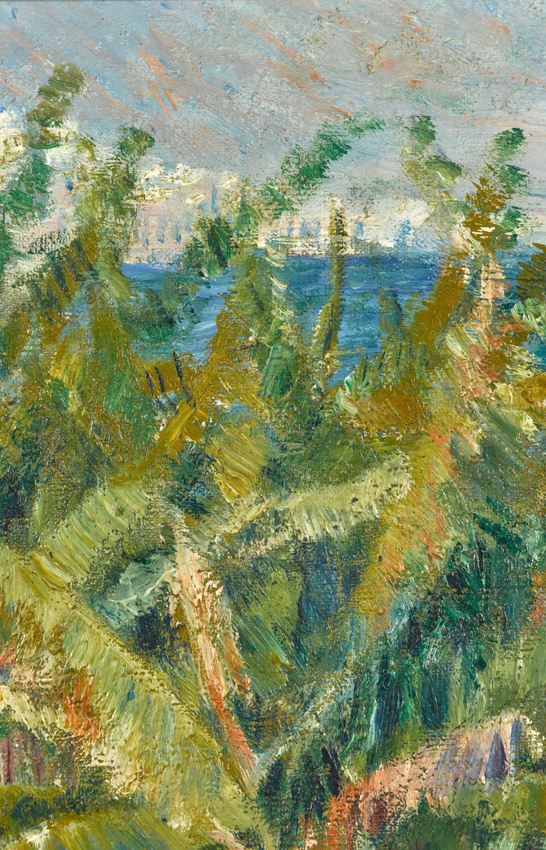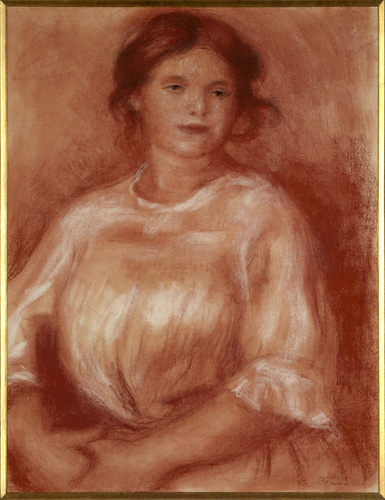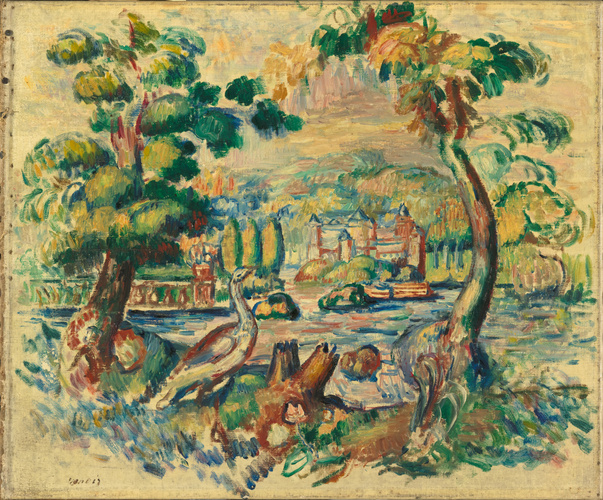Champ de bananiers
Starting in 1881 the art dealer Paul Durand-Ruel regularly bought paintings from Renoir. The painter then undertook all the trips he had previously been unable to afford and which would complete his artistic training. His first trip took him to Algeria, in the footsteps of Delacroix whom he admired. Renoir's visual experience there was as intense as it had been for the older artist. Seduced by the colours and the "incredible wealth" of nature here, he produced several pure landscapes, quite rare in his oeuvre.
This field of banana trees is in the Essai garden in Hamma, created in 1832 in Algiers. The plunging viewpoint offers a glimpse above the tallest leaves, of the houses of the white city of Algiers on the other side of the bay. To have this viewpoint, Renoir must certainly have set up his easel on the first floor of a building.
The luxuriant vegetation invades a large part of the canvas, like a tapestry with a tropical theme. The abundance of banana leaves introduces a tumultuous animation into the composition. The different colours blend harmoniously thanks to Renoir's very subtle, almost downy brushwork.
Presented years later at the Salon for the Society of Orientalist painters in 1895, Champ de bananiers attracted a lot of attention. La Chronique des arts mentioned "this superb landscape under the even sunlight".

